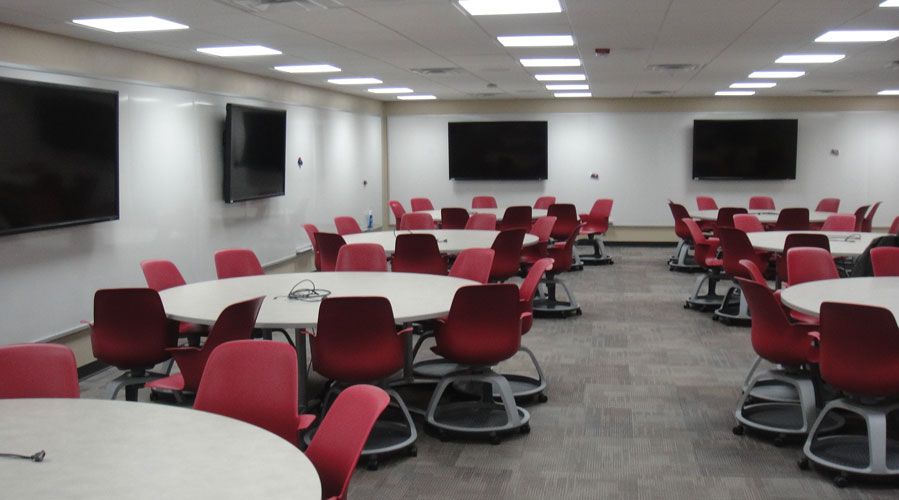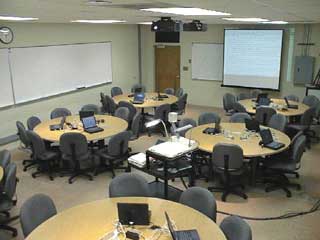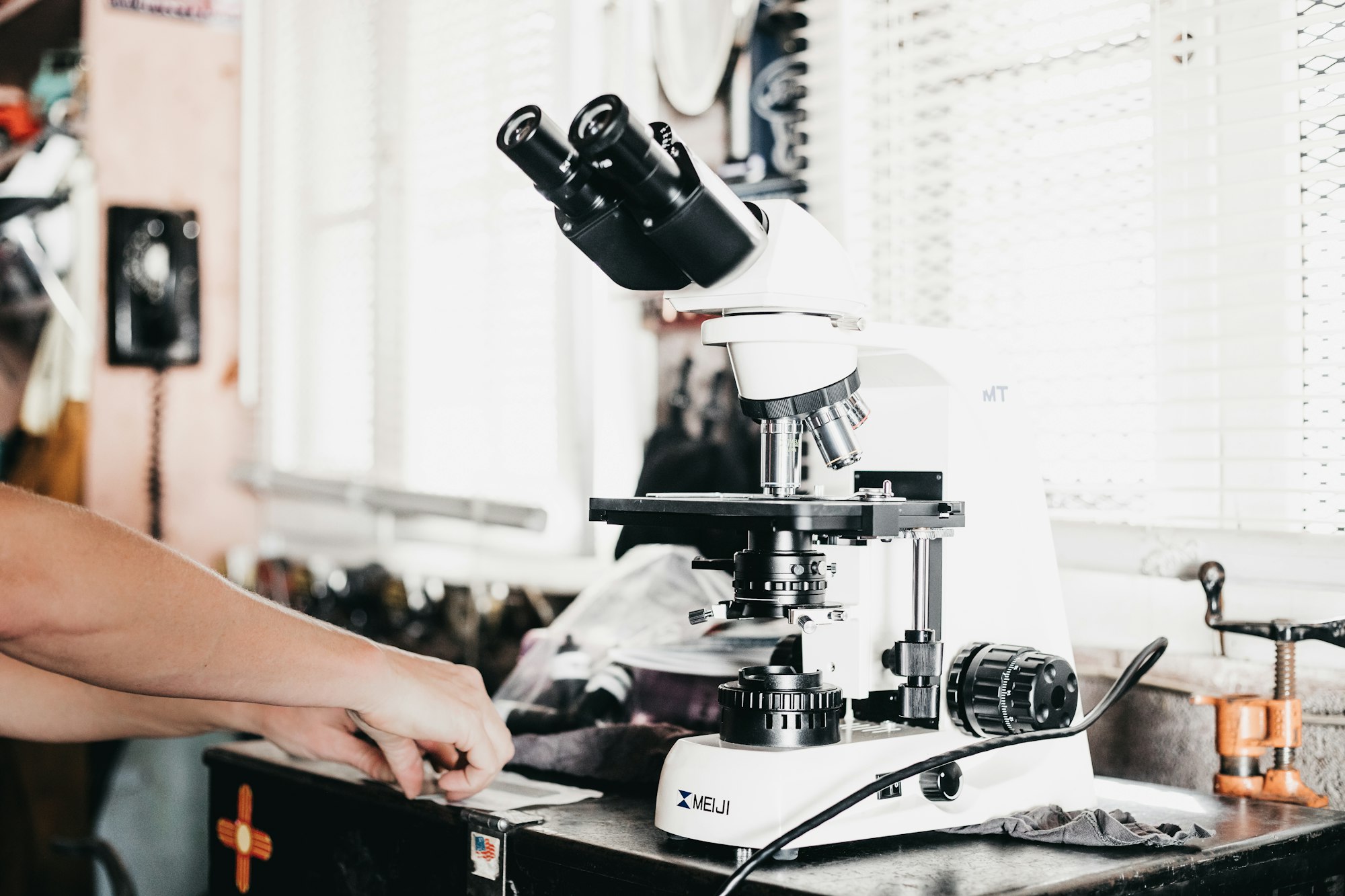Scaling Up active learning to large courses and large spaces

Here at Steelcase, I am working on a literature review of papers on active learning spaces. One of my managers here caught wind of my 1000-Word Literature Review articles, where I encapsulate research papers that I'm reading in 1000 words or less, and gave a request that I do a blog review of one article in particular that's a seminal paper in this small but active area of research: the article from 2007 by Robert Beichner and others that introduced the world to a model of active learning spaces known as SCALE-UP.
Beichner, R. J., et al. (2007). The student-centered activities for large enrollment undergraduate programs (SCALE-UP) project. Research-based reform of university physics, 1(1), 2-39.
You can snag a PDF of this paper here.
What questions does this paper try to answer?
The nine authors of this paper, hailing from a range of institution but centered on North Carolina State University, set out to redesign the total experience of beginning college physics classes, specifically large-section physics classes. Prior to this paper, some efforts at re-imagining intro physics courses had already been done, particularly the the Workshop Physics initiative at Dickinson College and the studio physics approach used at Rochester Polytechnic Institute. These initiatives focus on instruction that includes little to no lecture and greatly enhanced time and attention on active, hands-on experiences in the classroom. They were, and still are, successful in enhancing student engagement and conceptual understanding in physics.
But --- and this is a common objection whenever active learning techniques are mentioned --- these institutions typically have small classes of 30 or less. So Beichner and his co-investigators set out to answer the question: Is it possible to generalize the studio method to large-section classes of hundreds of students and attain similarly positive results in student learning?
What were the methods?
Recall that SCALE-UP is an acronym for "Student-Centered Activities for Large Enrollment Undergraduate Programs". So the "methods" of this paper start with a redesign at the foundations of introductory physics courses, that address both the pedagogy and the physical space.
For pedagogy, SCALE-UP minimizes lecture in order to devote as much time as possible during class for activities, specifically those that are supported by physics education research, for 4-6 hours per week. It also aims to maximize collaboration during these activities so that students are collaborating with their peers. What happens to the lecture? According to the paper,
[S]tudents begin learning about a topic by doing assigned readings before the topic is discussed in class. Students are asked to focus on the key ideas and express them in their own words before completing an assignment based on the reading. In class, the student groups do activities that help them understand the basic concepts from the reading, practice basic skills including learning multiple visual representations, and apply these concepts in experiments and problems. Follow-up homework is assigned to help students practice what they have learned in class and deepen their understanding.
If this sounds familiar, then congratulations for paying attention: This is the very definition of flipped learning that is discussed so often here and which is espoused in my book. After reading this paper, I'm convinced that SCALE-UP needs to be listed alongside the other early pioneering efforts in flipped learning from the 2000's.
As for space, recall SCALE-UP is specifically targeted at large-enrollment courses (the "LE" in the acronym). These are usually held in auditoriums that are unsuited for active learning. SCALE-UP classrooms hold the same number of people, but the furniture and layout are radically different. Here are two SCALE-UP rooms, one at NC State and the other at Virginia Tech:


Students are arranged at large round tables that seat nine each, so they can work in small groups of 3 and then pull together into a group of 9. The round tables force students to look at each other and engage with one another. Also, there is no clearly-defined "front" of the room; the emphasis in the class is immediately off the instructor and on the students. As the acronym suggests, this setup scales up very well. NC State has SCALE-UP rooms that seat 54 (6 tables) and 99 (11 tables) but feel far more intimate than a 30-person classroom where the chairs are arranged in rows.
The instructor can be at the center of the room to lead a discussion (and lecture, if warranted) but mainly circulates from group to group to facilitate the activities. Also, as one of the pictures above shows, there are whiteboards for each group, and in some implementations there are computer monitors for displaying computer work --- students can display their work just for their group, and the instructor can grab one group's display and project it out to the entire class. So although the room is physically big, it's pedagogically small.
In this initial study, a variety of intro physics courses were run in these classrooms and student achievement measured, using course grades and normalized gains on the Force Concept Inventory, and compared them with results from similar classes held using traditional pedagogy in traditional spaces.
What was discovered?
The authors found:
- The "failure ratios" --- the percentage of students earning failing grades in the traditional physics courses divided by the percentage of students failing the SCALE-UP courses --- ranged between 2.0 and 5.0, with the highest ratios being among female, African-American, and Native American students. For female students specifically, the ratio was 4.7, meaning that women failed traditional physics courses almost 5 times as frequently as they did SCALE-UP courses. Remarkably, this ratio could not be computed for Hispanic students because no Hispanic student failed any of the SCALE-UP courses.
- The FCI normalized gains for the traditional lecture/lab courses were 0.204 and 0.106 for the regular and honors sections of physics, respectively. For the SCALE-UP sections: 0.483 for all sections and 0.477 for classes over 60 students.
What does this mean for teachers and other ordinary people?
Maybe the biggest takeaway from this article is that effective active learning is entirely possible in a large class. It just takes some creativity and judicious selection of activities that, well, scale up to a class that size. In fact, other research suggests that large classes using active learning are more effective in terms of learning outcomes than small classes using more passive pedagogies. It's not the class size that ultimately matters, it's the pedagogy.
Also, note well that the key elements that make SCALE-UP effective tend to be more people-oriented than anything: Getting students to face each other, lecturing less so that students can interact more, making relevant activities that tap into student curiosity. It doesn't necessarily take a large-scale, expensive remodel of a classroom space to tap into the good parts of SCALE-UP. Maybe all it takes is rearranging the furniture in the room you have -- or if your room has fixed seats, devise a way for students to sit in them so that they can interact. Don't let the space you're stuck with prevent you from using pedagogy that is best for students.
And in the meanwhile, if you want to really transform a classroom space, I highly recommend applying for a Steelcase Active Learning Center grant.
What are the strengths and weaknesses?
There are a couple of weaknesses in the study here that are worth pointing out.
First of all, this is not a true empirical study with systematic controls and quasi-experimental designs in place. It's a post-hoc evaluation of a collection of changes to the pedagogy, technology, and space associated with a particular course. This isn't so much a "weakness" but a caveat to interpret the results in context and take the study for what it is. Later studies like the ones done at the University of Minnesota and the work of Terry Byers and Wes Imms address the use of space with more methodological rigor.
Second, as with a lot of early studies on active learning spaces (including the Minnesota studies), it's not possible to separate out the relative effects of pedagogy versus space in the results. Are the results on failure ratios and FCI improvements due more to the pedagogy, and could be realized in any kind of space? Or do you really need a space setup like NC State to get the full benefits? This study doesn't say.
Regardless of the space you are using, this paper has good ideas for making a large class into an effective and intimate active learning environment that benefits students, especially students in the STEM disciplines that are often at the greatest risk. It's worth considering how we can adapt its findings into our own teaching.

